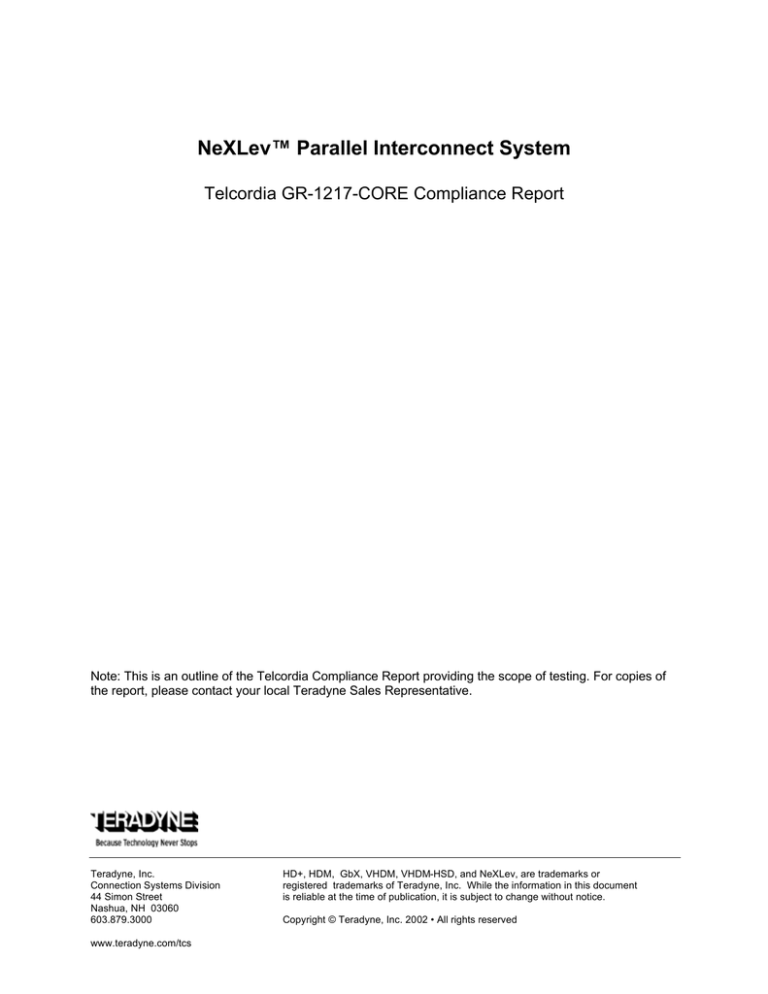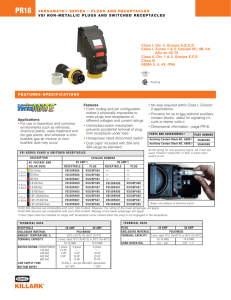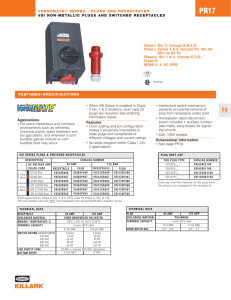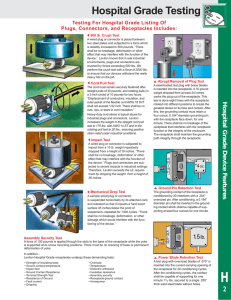
NeXLev™ Parallel Interconnect System
Telcordia GR-1217-CORE Compliance Report
Note: This is an outline of the Telcordia Compliance Report providing the scope of testing. For copies of
the report, please contact your local Teradyne Sales Representative.
Teradyne, Inc.
Connection Systems Division
44 Simon Street
Nashua, NH 03060
603.879.3000
www.teradyne.com/tcs
HD+, HDM, GbX, VHDM, VHDM-HSD, and NeXLev, are trademarks or
registered trademarks of Teradyne, Inc. While the information in this document
is reliable at the time of publication, it is subject to change without notice.
Copyright © Teradyne, Inc. 2002 • All rights reserved
NeXLev™ Parallel Interconnect System
Telcordia GR-1217-CORE Compliance Report
Revision 2
The NeXLev parallel interconnect system was tested for compliance to Telcordia specification GR-1217CORE, “General Requirements For Separable Electrical Connectors Used In Telecommunications
Hardware” per the following test plan:
NeXLev Bellcore GR-1217-CORE
Test Plan
Sample Preparation
Note: Each Test Group will require 5 Samples Mated to Test Boards to
obtain a minimum of 300 monitoring sites per group.
Copyright © Teradyne, Inc. 2002 • All rights reserved
Page 2 of 4
NeXLev™ Parallel Interconnect System
Telcordia GR-1217-CORE Compliance Report
Revision 2
Test Descriptions:
1. Mating/Unmating Force: EIA-364 TP13
The plug module and the receptacle module shall be mounted to test boards. The force required to mate
and unmate the plug and receptacle modules shall be measured.
2. Low Level Contact Resistance: GR-1217-CORE, Section 6.2.1 Low-Level Contact Resistance
(LLCR) & EIA-364 TP23. The test set up requires that the plug and receptacle modules be soldered onto
test boards that allow a four-wire measurement to the backplane and daughtercard module mating
interface through the test pwb ( the four-wire measurement nulls out the probe and pwb etch bulk
resistances).
The measurement energy shall be restricted to no more than 20 millivolts and 100 milliamperes. There
shall be no instance where the change in bulk resistance through the mated pair is greater than 10
milliohms.
3. Durability: GR-1217-CORE, Section 9.1.1.2 & EIA-364 TP09.
The backplane plug module and the daughtercard receptacle module shall be mounted to test boards.
The plug and receptacle modules shall be mated and unmated for 100cycles at a rate of <500
cycles/hour.
4. Dust: Dust and fiber contamination test module shall be conducted per GR-1217-CORE, Sections
9.1.1.1. The plug and receptacle modules shall be mounted to test boards and the LLCR measured while
plug and receptacle are mated. The connector shall be unmated, exposed to dust, mated once, and
LLCR again measured.
5. Vibration, sinusoidal: GR-1217-CORE, Section 9.1.2.1 Vibration and Mechanical Shock. The
verification method for vibration shall be EIA-364-TP28B, Test Condition II – 10.0g RMS sinusoidal
excitation.
Test set up requires the use of the same test boards using the four-wire measurement method. Test
duration of vibration shall be 2 hours on each of three mutually perpendicular axes. The LLCR shall be
less than 1 milliohm.
6. Mechanical Shock: GR-1217-CORE, Section 9.1.2.1 Vibration and Shock. The verification method for
mechanical shock shall be EIA-364-TP27B, Test Condition I, 30g Sawtooth excitation.
The test set up uses the four-wire test boards. The test sample shall be subjected to three shocks in each
direction along each of the three mutually perpendicular axes of the sample. In all, the shock test shall
employ 18 shock impulses. The test sample is secured in a mounting fixture for both vibration and shock.
The low-level contact resistance shall not exceed 1 milliohm.
7. Thermal Shock: Plug and receptacle modules shall be mounted to test pwb’s and initial LLCR
measurements taken. The mated modules shall then be subjected to five thermal shock cycles. The cyclic
temperature variation shall be from –55ºC to 85ºC per EIA-364-TP32B, Test Condition I and GR-1217CORE, Section 6.3.3.
8. Humidity: Humidity testing is to be performed per EIA-364-TP31, Method II, Test Condition A (500
hours steady state 90-95% relative humidity at 40ºC +/-2ºC) and GR-1217-CORE, Section 9.1.1.1.
9. Temperature Life: Mated plug and receptacle modules shall be elevated to 85ºC for a minimum of 500
hours per EIA-364-TP17, Test Method A, Condition 3.
Copyright © Teradyne, Inc. 2002 • All rights reserved
Page 3 of 4
NeXLev™ Parallel Interconnect System
Telcordia GR-1217-CORE Compliance Report
Revision 2
10. Four Gas MFG Testing: EIA-364 TP 65.
The recommended MFG procedure, gas analyses procedures, and corrosion monitoring procedures are
defined in the ASTM B827-92 and ASTM B810-91. The four gas mixture for MFG Testing:
Gas
NO2
Cl2
H2S
SO2
Concentration
200 ppb
10 ppb
10 ppb
100 ppb
The test temperature shall be 30“-ê½”©C and the relative humidity 70%. Modules mounted to the four
wire test boards shall be exposed to twenty days of the MFG to evaluate the risk to the significant number
of telecommunications connectors, including backplane pins and headers, which are unmated for some
years before being put into service.
The low-level contact resistance is measured initially and every 5 days during the test. The samples shall
be stabilized at room ambient for at least 1 hour before the final observations or measurements are
made. The low-level contact resistance shall not exceed 1 milliohm.
Test Results:
Results for test groups 1, 2, 3, and 4 are reported in Contech Research, Inc.
test report #201160, Rev. 1.1
Results for test group 6 are reported in Analytical Answers test report #39442.
Reports are available upon request.
The NeXLev parallel interconnect system met or exceeded all requirements specified in Telcordia
GR-1217-CORE.
Copyright © Teradyne, Inc. 2002 • All rights reserved
Page 4 of 4




